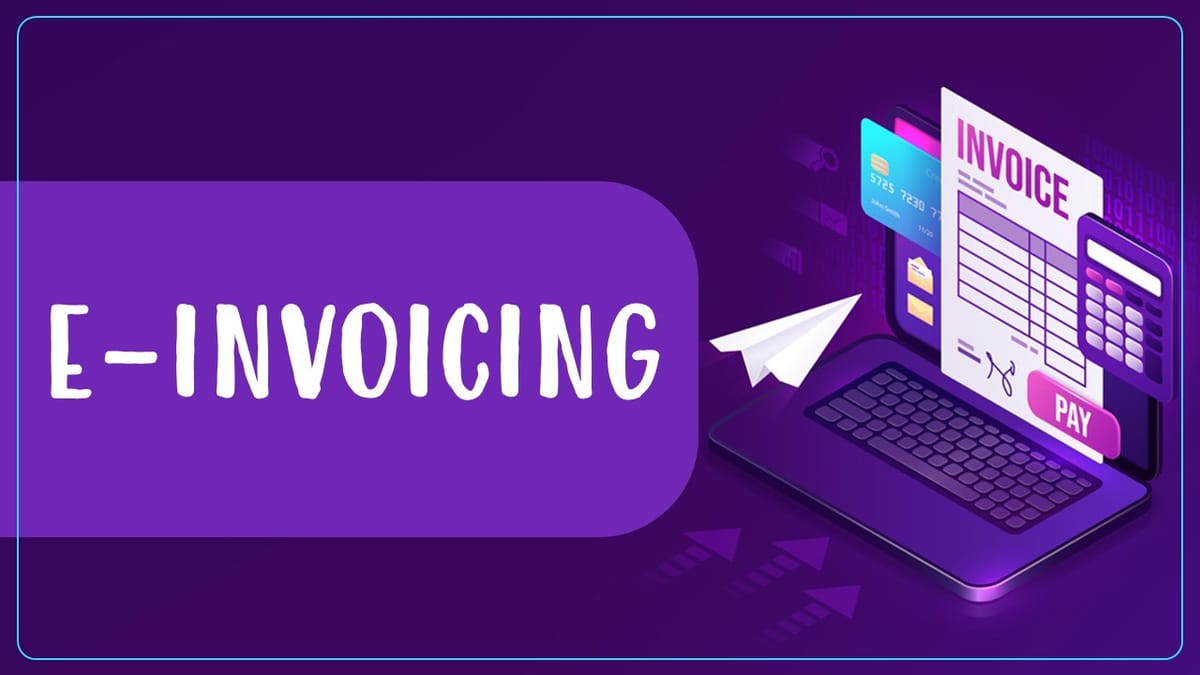Reetu | Aug 18, 2023 |

GSTN issued Advisory on E-Invoice Glossary and Step-by-step Guide
The Goods and Services Tax Network(GSTN) has prepared an informative resource in the form of an e-invoice glossary and a step-by-step guide for your reference via an advisory.
What is e-Invoicing?
‘e-Invoicing’ means reporting details of specified GST documents to a Government-notified portal i.e., Invoice Registration Portal (IRP) and obtaining an Invoice Reference Number (IRN). It doesn’t mean the generation of invoices by a Government portal.
IRP (Invoice Registration Portal)
It is a government approved platform where notified persons upload or report invoices. Currently, six portals are authorised to generate IRN on reporting of invoices as per Rule 48(4) of the CGST Rules. Reporting invoices and generating Invoice Reference Numbers (IRN) on any of these portals is free of charge
IRN (Invoice Reference Number)
The unique identifier for every invoice reported on an IRP. It is based on the computation of a hash of the supplier’s GSTIN, the financial year, the document type, and the document number.
AATO (Annual Aggregate Turnover)
AATO (Annual Aggregate Turnover) for e-Invoicing is calculated based on the PAN of a taxpayer and the information provided in their GSTR-3B returns. It represents the total turnover of the taxpayer during a financial year and is used to determine the applicability of e-Invoice reporting requirements.
Enablement
The process of registering and enabling a taxpayer for e-Invoicing on the GST portal, allowing them to report e-Invoices on any of the six IRPs. Taxpayers are automatically enabled for e-Invoicing based on AATO but if not enabled they need to be self-enabled on the portal.
GSTIN (Goods and Services Tax Identification Number)
A unique identification number assigned to each registered taxpayer under the GST system.
GSTR-1
A monthly or quarterly return that taxpayers need to file, which contains details of outward supplies, including e-Invoice data.
Debit Note
A document used to record a reduction in the value of a previously issued invoice, typically issued by the seller.
To Read More refer to Notification given below.
Step 1: Enablement for e-Invoicing:
i. All taxpayers who are eligible for the e-Invoicing, as per the Government notifications are automatically enabled for reporting of e-Invoices on any of the six authorized IRP portals.
ii. The enablement status can be checked at e-invoice portal.
iii. If an eligible taxpayer is not enabled for e-Invoice, they can get self-enabled at e-invoice portal.
iv. Please note that the enablement status on the e-Invoice portal doesn’t automatically mean that a taxpayer is legally obligated to do e-Invoicing. The ‘enablement’ is primarily to ensure only the taxpayers having notified turnover limits are able to register and test/report invoices on IRPs.
Step 2: Register on any of the six Invoice Registration Portals:
The Invoice Registration Portal (IRP) is the website for uploading/reporting invoices by the notified persons. Currently, six IRP portals have been notified for reporting the invoice. These six active Invoice Registration Portals (IRPs) offer services for reporting e-Invoices and generating Invoice Reference Numbers (IRN), free of charge.
Enabled taxpayers must register on any of the six IRPs before they can start reporting e-invoices. This onboarding process involves a one-time verification of the taxpayer’s registered mobile number and email through an OTP.
Upon successful validation, login credentials for the IRP portal are created, and the taxpayer is ready to report e-invoices.
Step 3 & 4: Reporting and Auto-population of e-Invoice:
i. To receive an Invoice Reference Number (IRN) for their e-Invoices, taxpayers must report the data of e-invoices on the IRP portal using the predefined INV-01 schema in a JSON format.
ii. Most IRPs provide functionalities for reporting e-Invoices via offline tool, online web tool, Mobile App and API-based methods.
iii. The schema and the portal have built-in validations to prevent duplicate reporting and other checks.
iv. Upon successful validation, a signed e-invoice, carrying a unique IRN and a QR code, is returned to the taxpayer.
v. A copy of this invoice is then shared with the GST system for auto-population in the supplier’s GSTR-1 return.
vi. Issue e-Invoice with IRN details to buyer.
To Read More refer to Notification given below.
In case of any Doubt regarding Membership you can mail us at [email protected]
Join Studycafe's WhatsApp Group or Telegram Channel for Latest Updates on Government Job, Sarkari Naukri, Private Jobs, Income Tax, GST, Companies Act, Judgements and CA, CS, ICWA, and MUCH MORE!"